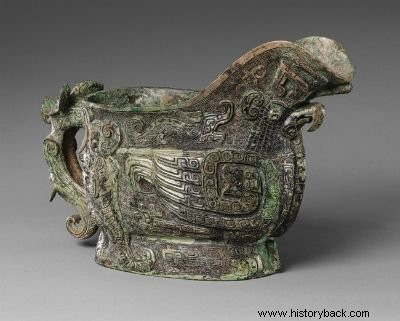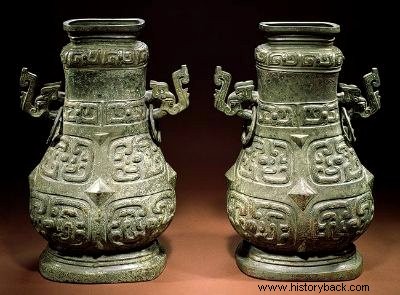Three dynasties ruled China between the beginning of the second millennium BC and the year 221 BC. All lived around the Yellow River Basin. The Xia, Shang and Zhou were responsible for the process of occupation of Chinese territory and the ethnic formation of the country .
Even before the influence of this dynasty, around 2,900 years BC, important inventions credited to the Chinese were already recorded, such as the potter's wheel, a great advance to model the vase. Even today, this is one of the most common methods for producing clay pots.
Xia Dynasty
The reign of the Xia dynasty, the oldest of these, begins in 2200 BC. and goes back to 1750 BC, in the region known as the Yellow River Valley. Historians have little evidence gathered about the permanence of the Xia dynasty, which began with the reign of Yu the Great, known for acting against the floods of the Yellow River.
On the part of the Xia, China experienced the development of agriculture, commerce and medicine. Settlers built houses on the banks of the Yellow River and, in addition to cultivating the land, also kept animals. It is also in this period that silk appears, made from the cocoon of the silkworm.
Society in the Xia Dynasty
Seventeen emperors reigned during this dynastic period. The Xia dynasty played an important role in the social organization of the Chinese, being responsible for the institution of marriage. Also the precursor works of writing, which would be perfected by its successor, the Shang dynasty, which lasted from 1750 BC. to 1040 BC
Shang Dynasty
Scholars in the Shang dynasty developed a writing system that was engraved on animal bones and bronze pieces. The inhabitants of this dynastic period developed the use of bronze pieces and an exquisite system of social organization.
 Shang Dynasty Ceramic Vase
Shang Dynasty Ceramic Vase
Researchers have found bronze vessels with the earliest evidence of writing, dating back to 1200 B.C.
The Shang divided society into nobles, city-palace inhabitants and peasants. Monarchic power was restricted to the religious field. They were polytheists and believed that the dead were turned into gods.
The last Chinese capital belonging to the Shang dynasty was located in Anyang in 1300 BC, the evidence of which was only discovered by archaeologists in the last century.
Zhou Dynasty
Neighboring peoples ended up weakening the dynasty, which was replaced by the Zhou, who ruled China from 1100 BC. and 771 BC. Once allies of the Shang, the Zhou lived in what is now known as Shaanxi.
A battle that took place in the year 1050 BC. it marked the downfall of the Shang dynasty and ushered China into what became known as the "golden age". The reference summed up the admittedly efficient Zhou way of ruling.
The power was weakened in the year 771 BC, when King Zhou was killed by members of a tribe of vassals. Although the son assumed power, he fled to the east and the dynasty's influence was weakened.
The Zhou dynasty is considered the main founder of Chinese civilization and controlled the country during the Middle Kingdom. It was up to the Zhou to make the first war artifacts in iron, which contributed to the defense of the borders. This is the era called the Iron Age in China.
 Zhou Dynasty Vase
Zhou Dynasty Vase
Among the many points that highlight this dynastic period is Confucius, born in 600 BC. and considered one of the most important philosophers in Chinese and world history. Confucius' doctrine, Confucianism, encourages traditional hierarchy, rituals, piety and respect for elders.
Imperial China
In 221 BC, Qin Shi Huangdi became the emperor of unified China after nearly 250 years of war. The reign of Huangdi begins the period of imperial China and is responsible for the introduction of the system of payments, weights and measures and writing.
Also in this period begins the construction of the Great Wall of China. Quin Shi Huangdi died in 210 BC. and, to protect his tomb, an army of 10,000 ceramic soldiers was built. The warriors became known as the Terracotta Army, and although they were mass-produced, they display individual features.
Read Also :
- Great Wall
- China
- Ancient India
